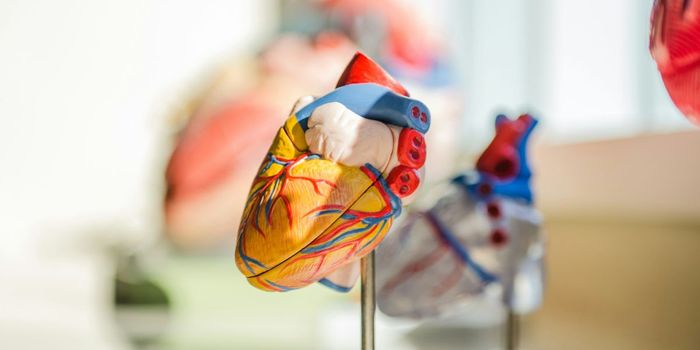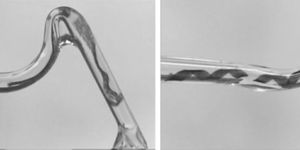Implications of Catheter-Associated Urinary Tract Infections
Urinary tract infections due to indwelling catheters are the fourth most common cause of hospital-acquired infections (HAI) in the healthcare setting and account for greater than 12% of HAIs in the acute care setting. Almost all HAI UTIs are due to instrumentation (catheterization). They consist of catheter-associated urinary tract infections and catheter-associated asymptomatic bacteriuria, similar but distinct conditions. Several factors have been correlated with these infections including the duration of the placement of the catheter and the length of stay in the facility. It is important that these infections are treated immediately due to the severe implications such as bacteremia and sepsis that can follow. It is imperative that the hospital or long-term care facility has appropriate infection control procedures in place concerning decisions and conditions involved in the placement of the urinary catheter. It is the nurse's role, from the infection control practitioner down to the bedside nurse, to provide surveillance of the condition of the patient with a catheter and to observe any indications that a urinary tract infection may be present. In this way, it ensures there is a safe and effective care environment for the patient. Research has shown that 45-79% of patients in adult critical care units had an indwelling catheter, and when broken down into specific groups, there were "17% of those on medical wards, 23% on surgical wards, and 9% on rehabilitation units.". The use of indwelling catheters is extremely common in hospitals and long-term care facilities. Thus infection control measures are critical to patient safety. One of the contributing factors in catheter-associated urinary tract infections is the formation of biofilms. These are mucopolysaccharide substances formed by microorganisms growing in colonies on the surface of the catheter. Other components, such as magnesium and calcium, are incorporated into this material which begins to form immediately upon insertion of the catheter. The bacteria responsible for asymptomatic bacteriuria and urinary tract infection grow in the biofilm supported by its nutrients. Asymptomatic bacteriuria, which is the presence of bacteria in the urine without symptoms, is common in most patients whose catheters have been in place for several weeks with chronic indwelling catheters having universal and continuous bacteriuria. Asymptomatic urinary tract infections, which also have the presence of bacteria in the urine, have different diagnostic criteria and are treated differently. Asymptomatic bacteriuria " is="" not="" significant="">fourth most common cause of hospital-acquired infections (HAI) in the healthcare setting and account for greater than 12% of HAIs in the acute care setting. Almost all HAI UTIs are due to instrumentation (catheterization). They consist of catheter-associated urinary tract infections and catheter-associated asymptomatic bacteriuria, similar but distinct conditions. Several factors have been correlated with these infections including the duration of the placement of the catheter and the length of stay in the facility. It is vital that these infections are treated immediately due to the severe implications such as bacteremia and sepsis that can follow. It is imperative that the hospital or long-term care facility has appropriate infection control procedures in place concerning decisions and conditions involved in the placement of the urinary catheter. It is the nurse's role, from the infection control practitioner down to the bedside nurse, to provide surveillance of the condition of the patient with a catheter and to observe any indications that a urinary tract infection may be present. In this way, it ensures there is a safe and effective care environment for the patient.
Research has shown that 45–79% of patients in adult critical care units had an indwelling catheter, and when broken down into specific groups, there were "17% of those on medical wards, 23% on surgical wards, and 9% on rehabilitation units.". The use of indwelling catheters is widespread in hospitals and long-term care facilities. Thus infection control measures are critical to patient safety.
One of the contributing factors in catheter-associated urinary tract infections is the formation of biofilms. These are mucopolysaccharide substances formed by microorganisms growing in colonies on the surface of the catheter. Other components, such as magnesium and calcium, are incorporated into this material which begins to form immediately upon insertion of the catheter. The bacteria responsible for asymptomatic bacteriuria and urinary tract infection grow in the biofilm supported by its nutrients.
Asymptomatic bacteriuria, which is the presence of bacteria in the urine without symptoms, is common in most patients whose catheters have been in place for several weeks with chronic indwelling catheters having universal and continuous bacteriuria. Asymptomatic urinary tract infections, which also have the presence of bacteria in the urine, have different diagnostic criteria and are treated differently. Asymptomatic bacteriuria “is not a clinically significant condition, and treatment is unlikely to confer clinical benefit,” and “substantial numbers of patients are being diagnosed inappropriately with CAUTI (catheter-associated UTI), for which they receive treatment that is not recommended. This inappropriate treatment is potentially harmful regarding the emergence of resistant pathogens, suprainfections, and unnecessary costs.". Because of the difficulty distinguishing between the two and the treatment implications, clear guidelines need to be in place regarding the use of catheters, the duration of time they are left in, and procedures revolving around their placement and removal.
If left untreated, a urinary tract infection can progress to bacteremia, the presence of bacteria in the bloodstream. It is the most common cause of secondary bloodstream infections in hospitals and long-term facilities. Also known as sepsis, this infection has a rapid onset and can quickly spread to other organs if not adequately treated with antibiotics. Nicolle notes that in a study performed in Quebec over three years, the overall mortality rate from sepsis was 15%.
While indwelling catheters are unavoidable at times, there are a variety of ways that the rate of these infections can be reduced. The most obvious is that they should only be used when clinically indicated, and they should be left in place for the shortest time possible. Education of physicians and nurses by the infection control staff on the aseptic insertion of catheters, knowledge of the recommended indications for usage, and the setting up of strict guidelines for all staff to follow goes a long way in the reduction of these infections. Other prevention strategies include “antimicrobial catheters, intermittent catheterization, suprapubic catheters, and condom catheters." Another approach to their prevention is to administer antibiotics at the time of the catheter removal in an attempt to eliminate the risk of infection.
The Centers for Medicare and Medicaid Services (CMS) has imposed a Hospital-Acquired Condition (HAC) Reduction Program that reduces reimbursement to hospitals that have the worst rates of HACs when compared to other hospitals. It encourages hospitals to adopt appropriate patient safety practices, and it saves CMS about $350 million a year. Catheter-associated urinary tract infections are one of the HACs that CMS monitors through surveillance by the CDC.








